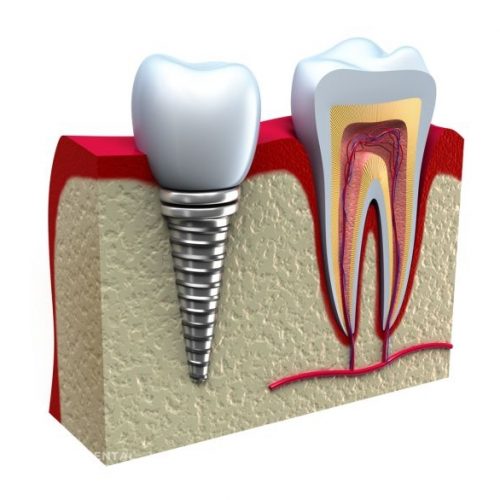Tooth Whitening

Tooth whitening is one of the most popular cosmetic dental treatments around. The process involves using bleaching agents to lighten the colour of a patient’s teeth.
 While the exact shade of tooth enamel can vary from patient to patient, and even tooth to tooth, it’s generally an off-white to yellow colour. Over time, teeth can become stained in a number of ways, such as:
While the exact shade of tooth enamel can vary from patient to patient, and even tooth to tooth, it’s generally an off-white to yellow colour. Over time, teeth can become stained in a number of ways, such as:
- Diet and lifestyle. Tea, coffee, red whine, and smoking will all cause surface staining of the teeth.
- Poor oral hygiene. Irregular brushing and flossing will lead to teeth becoming discoloured. This can sometimes result in deep stains beyond the enamel which teeth whitening can’t reach.
- Medications. Some types of antibiotics, for example, can result in teeth becoming discoloured.
- Dental problems. Tooth decay, injuries, naturally thin enamel, tartar, and old fillings can discolour teeth.
- Excessive fluoride. If a child has too much fluoride while developing, their teeth can become stained and mottled, with bright which patches visible on the enamel.
Tooth whitening usually works best for surface staining, or staining caused by age. Only your dentist will be able to determine the right course of action for you to take.
What to Tell Your Dentist Before Getting Tooth Whitening
Not all staining is created equally, and your dentist will need to know a few things before they can recommend the right type of tooth whitening.
A dental and medical history will be necessary to allow your dentist to make an informed decision. This is confidential between you and your dentist.
Your dentist will inspect your teeth and may take x-rays to examine their health. If decay or gum disease is present, it may be necessary to treat that first before whitening.
Reasons You Might Not Be Suitable for Tooth Whitening
While most people are perfectly fine to get tooth whitening, there are times when someone isn’t the best candidate.
- If the discolouration is caused by medicines or fluoride.
- If teeth are too sensitive to hot and cold food and drink.
- If the tooth enamel is defective or absent.
- If the patient habitually uses tobacco products such as cigarettes, cigars, and chewing tobacco.
- If there is gum disease.
- If there is habitual use of certain alcoholic drinks.
- If the patient has dentures, dental implants, crowns, veneers or fillings.
- If the patient is too young.
- If the patient is pregnant or breastfeeding.
Your dentist will assess your individual situation and advise you on the best course of action to take.
Types of Tooth Whitening
There are several methods of professional tooth whitening available. These all function on the same principal — a bleaching agent is added to the teeth and then activated. The method of activation and the strength of the bleaching agent will change depending on the type of tooth whitening system and the patient’s tooth sensitivity.
Light Activated and Laser Bleaching
The dentist protects the lips and gums with a rubber seal or gel. They then apply the bleaching agent to the tooth surfaces. It’s important to keep the lips and gums covered during this process, as they’re very sensitive to bleaches and can get burned and scarred.
The bleaching agent is made more effective with the use of either a laser or a specially designed high powered light. A session takes about one hour, and can lighten teeth by 5-8 shades in a single sitting.
Bleaching Trays
Bleaching trays are whitening kits that can be taken home from the dentist, and are very different to over-the-counter whitening kits one can get from a pharmacy.
Bleaching trays are custom-made by your dentist and their team to fit over a person’s teeth. They’re also provided with a tube of bleaching gel and instructions. The trays are worn from one hour to overnight, and can be used along with light or laser activated bleaching to achieve optimum results.
Internal Bleaching
For situations where a tooth has become discoloured from within after a root canal, the dentist may suggest internal bleaching. This involves drilling a small hole in the back of the tooth to remove some of the filling material and replacing it with bleaching agent. A temporary filling is used to close the hole.
After a week or so the bleaching agent and temporary filler will be removed by the dentist. This may need to be repeated several times for optimum results.
If you’re interested in whitening your teeth, contact the team at Putney Dental today. We’d love to help you achieve a brighter, healthier looking smile with our tooth whitening services.
Impacts of Stress on your Dental Health When Should You Get Your Wisdom Teeth Removed?Latest from the Dental Blog
 15 Sep 2020
15 Sep 2020
Root Canal Treatment Guide
Root canal treatment (or endodontic treatment) is a method to save a tooth from being extracted despite being badly damaged…
 19 Jul 2022
19 Jul 2022
Root Canal vs Filling: What Procedure Do I Need?
Our teeth are fantastic tools for eating and drinking, but the older we get the more they are exposed to…
 16 Jun 2023
16 Jun 2023
3 Stages of Recovering from Dental Implants
Invested in getting a dental implant but unsure about the recovery process? Our guide will walk you through the main…
